Director’s Foreword
Welcome to this special edition of the Environment eNewsletter which we have dedicated to the success of the Mining Rehabilitation Fund (MRF).
The MRF is finally in full swing and we have a lot of news to share. The entire process has been a huge success and we have received great support from industry. The MRF team has also worked very hard to ensure that the rollout was a success and overall there have only been a very small number of non-compliant tenement holders.
In the final weeks before the MRF levy period closed on 30 June, the MRF team sent over 1,600 emails to holders who had registered but not completed the MRF report, reminding them to finish it before the close of the period. We made over 500 phone calls in the final days of the period and first few days of July to encourage and assist holders to complete the reports.
The uptake by industry in the use of the new online MRF data lodgement system has been exceptional, with more than 95 per cent of eligible tenements having their data submitted before the end of June. It was also pleasing that of the major tenement types (i.e. Mining Leases, General Purpose Leases, General Purpose Licences, Exploration licence and Prospecting Licences), the holders of Prospecting Licences achieved the highest submission rates of any of the major tenement types; with over 99 per cent of prospecting licences having data submitted by the end of June.
Since the closing date on 30 June, the MRF team have worked with tenement holders so that now more than 99.5 per cent of tenements have had their disturbance and rehabilitation data submitted for the 2013/14 year.
Many of the outstanding tenements (now numbering less than 100) appear to be largely because of tenement holders not updating their contact details with the Department of Mines and Petroleum (DMP). DMP is currently looking at ways to address this problem; and this eNewsletter also includes information on how tenement holders can contribute to the ongoing refinement of the MRF process.
Staff from the MRF team have been assisting tenement holders throughout the voluntary year and the first compulsory year and will be available to help out again for the 2015 reporting period.
With tenement holders having now supplied an email address we will also send out electronic reminders directly to holders with any updates and system improvements.
We will be sending a short questionnaire in the next few weeks to ask our tenement holders how we might be able to further improve the system for future reporting periods. I hope you will take the time to provide your feedback to help us continuously improve our reporting systems.
The MRF was also judged a finalist for the Premier’s Award in the “Developing the Economy” category for 2014. Each year the Premier presents an award for the most outstanding initiative or extraordinary achievement in the State’s public sector. Although not taking out the award this year, the nomination goes a long way in publicising the MRF outside of just the mining industry.
On another matter, in October 2014 I was fortunate to attend the 9th International Conference on Mine Closure in South Africa, and took the opportunity to present and discuss the Mining Rehabilitation Fund approach in Western Australia as a solution for dealing with mine legacies.
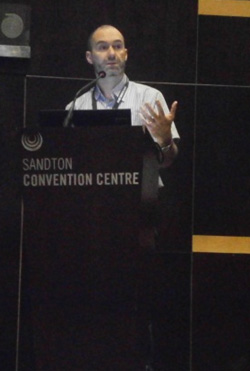
Phil Gorey (Executive Director, Environment)
The issue of environmental mining securities, and abandoned mines, is a complex policy challenge for many countries, and I received an enormous amount of interest from industry, regulators and non-government authorities in relation to the MRF.
There has also been considerable interest in Western Australia’s adoption of the MRF within Australia; with both the New South Wales and Queensland governments recently undertaking review of their environmental securities arrangements and highlighting the MRF system as an option they will be considering.
It was pleasing also to see in the latest Fraser Institute Report (Survey of Mining Companies 2013), the MRF was singled out in the survey commentary as:
An “exemplary policy”: The new Rehabilitation Fund/Bond Retirement Scheme.
—An exploration company, Company president
The support of industry, State Government agencies and non-government organisations in the development and implementation of the MRF is clearly providing an example for other jurisdictions to follow.
I thank you all for your ongoing support.
Dr Phil Gorey
Executive Director Environment
Progress with collecting MRF contributions
The MRF was implemented on 1 July 2013 for an initial opt in voluntary year. From 1 July 2014, all tenement holders regulated under the Mining Act 1978 (with the exception of tenements covered by State Agreements not listed in the regulations) are now required to report disturbance data by 30 June each year and contribute annually to the fund.
In the first three months of the voluntary period, some $3 million was paid into the fund. The incentive for tenement holders to voluntarily enter the fund was the opportunity to have unconditional performance bonds held against their tenements retired early providing the holder met all of the eligibility criteria.
During the voluntary year DMP was able to complete the process from data submission to bond retirement in an average of 4 working days. From 1 July, 97 per cent have been completed within 30 working days; with an average processing time of 13 working days. Given the staff were conducting eligibility checks on around 23,000 tenements this is an outstanding effort.
During the commencement of the voluntary period on 1 July 2013, a steady number of companies and individuals voluntarily opted into the MRF. During the voluntary year, DMP retired bonds to eligible holders to the value of $290 million and collected voluntary levy payments of $6.7 million.
To date, over $32 million has been paid into the fund and DMP has retired more than $829 million of unconditional performance bonds.
Administration of the MRF and any funds used to rehabilitate legacy abandoned mine sites must come from interest generated through the fund. The principal will only be used for new abandoned sites, once all other options to have the site rehabilitated by the responsible party have been exhausted.
Tenement holders continue to be responsible for meeting all rehabilitation requirements on the tenement, even after they no longer own the tenement, unless that responsibility has been passed on to a new tenement holder.
DMP is currently developing an abandoned mine policy which will be released for consultation in early 2015. This policy will set the framework and priorities for abandoned mine rehabilitation through the MRF in the future.
At the start of the voluntary period, DMP held unconditional performance bonds worth over $1.2 billion and we hope to retire most of the remaining $390 million by the end of the year. A small number of holders are yet to pay the 2014 levy and when those payments are received the total payments into the fund is forecast to be $33.5 million. A small number of bonds will be retained for holders who are not currently able to meet the published criteria.
All financial data related to the Mining Rehabilitation Fund is provided in DMP’s Annual Report.
MRF data now publicly available
| Accessing the MRF Data
The list of all eligible tenements, their reported disturbance footprint and rehabilitation status is able to be downloaded for free from the DMP web page as an excel file. http://www.dmp.wa.gov.au/19344.aspx. This webpage also provides some of the descriptive information regarding column data to aid in interpretation |
The first year of ground disturbance and rehabilitation data collected under the MRF is now available on the DMP website.
The release of this information is an important milestone. Making this disturbance and rehabilitation data available to the public improves transparency and will assist industry conduct research on tenements this includes assisting prospective tenement purchasers of assets and environmental liabilities associated with tenements.
This data shows the amount of land disturbed in a given year by exploration and mining companies operating under the Mining Act, and the amount that is under rehabilitation.
From research undertaken by DMP, this dataset is the most accessible, comprehensive and accurate public release of mining and rehabilitation data available anywhere in Australia.
Each year the value of the data will grow as tenement holders continue to report on their mining and rehabilitation areas.
The data is available for users to filter and search by region, type of disturbances, and type of lease and information such as the total area of land currently under rehabilitation can be extracted.
 The community is also able to access the data to gain a detailed picture of mining and exploration activities in a given area.
The community is also able to access the data to gain a detailed picture of mining and exploration activities in a given area.
The data builds on information already collected by DMP during a project’s approval process and ongoing monitoring.
While this is just the first year of data collected during the MRF’s operation, as the years progress, DMP will be able to build on this picture and compare ground disturbance over time.
The data collected through the MRF is providing important insight into and across the industry and will enable DMP to provide positive and accurate information about the industry to the public.
Getting the right data – in the best way
Making sure that the right data is provided to DMP through the online MRF system is vitally important for the successful operation of the Mining Rehabilitation Fund. DMP has been working on this, as well as working to ensure it can be done in the most efficient way for tenement holders.
All eligible tenement holders must annually provide a submission to confirm their contact details, report to DMP the extent of environmental disturbance, and the extent of land under rehabilitation. This requirement is in place for a number of reasons, most importantly:
- The Mining Rehabilitation Fund Act 2012 requires that all tenement holders provide an annual report, even in instances where there is no current environmental disturbance on the tenement.
- This compulsory reporting enabled DMP to implement the recent changes to the validity term for Programmes of Work (from one year to four years) as industry operators would be providing the necessary information about whether disturbance and rehabilitation has taken place on a tenement on an annual basis.
- DMP have had feedback from concerned stakeholders that some tenement holders appear to retain tenements with no intention to explore or mine them; this is known as “land banking” or “real-estating”, and is a concern for a number of our stakeholders. The collection of annual disturbance information will enable DMP to accurately determine if and where this practice is occurring.
- The implementation of the MRF has highlighted that there is a need to ensure that tenement holder contact details are regularly confirmed by the tenement holder. The implementation of the MRF has demonstrated that many tenement holder details have not been updated with the department. This not only exposes the tenement holder, it also means that DMP cannot contact the tenement holder to keep them informed of matters relating to their tenement. The MRF process allows this confirmation of contact details to occur.
The compulsory submission of annual data will also help inform DMP of emerging issues relating to industry activity. For instance, if a region, commodity type, or area is reporting that no disturbance is occurring for extended periods, this will provide valuable industry trends which will help DMP gauge if the industry is facing particular challenges that require government consideration.
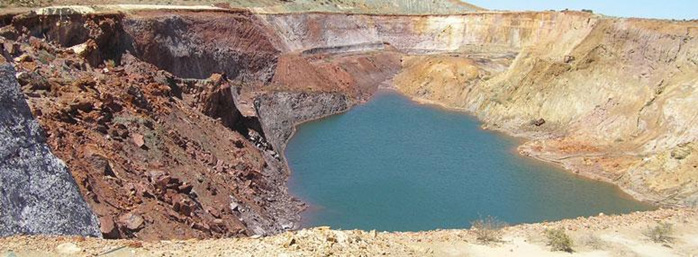
In recognising this importance, DMP has continued to develop the MRF systems and processes so that the necessary information can be submitted by tenement holders in the most efficient way.
The most significant step taken by DMP in enabling efficient data submission has been the use of online computer submission systems instead of hardcopy submissions. The mandatory use of online lodgement of information has been critical in avoiding delays and errors which often result from the use of hardcopy forms. The fact that tenement holders were able to complete the data submission for more than 95 per cent of all eligible tenements by 30 June indicates that the system was intuitive and robust.
Since first introducing the MRF online lodgement system a little over a year ago, DMP has implemented a range of enhancements arising from tenement holder feedback which is aimed at improving the ease of submitting accurate annual data. These include:
- Reducing the duplication between AER online lodgement and MRF online lodgement. There is now functionality for tenement holders required to submit annual environmental reports to enter the disturbance data once in either the AER online system or the MRF online system (and elect to have the system use the same data for both submissions).
- Using previous year’s data as the basis for future year submissions. Tenement holders can elect to pre-populate their submission with disturbance and rehabilitation data from the previous year. This will aid where there are only minor changes in the year.
- Simplifying lodgement where there is no change to details. When reporting no changes to environmental disturbance data or their contact details, the tenement holder is only required to complete two tick-boxes online and select their chosen assessment date.
DMP is not stopping here. Based upon further feedback from tenement holders, DMP is looking at other opportunities to improve the functionality of the MRF online system. Further details of proposed further developments are outlined towards the end of this eNewsletter.
The MRF Advisory Panel
On 10 December 2013, DMP Director General Richard Sellers established the inaugural five-member Mining Rehabilitation Advisory Panel.
The Mining Rehabilitation Advisory Panel is provided for under the Mining Rehabilitation Fund Regulations 2013, and members are appointed to provide independent advice about the administration of the Mining Rehabilitation Fund and other matters such as rehabilitation of abandoned mines.
The members of the panel, who commenced their term on 20 December 2013, have been appointed for a period of two years.
The department received 30 expressions of interest when it advertised for panel members in August 2013 with experts from across Australia expressing interest in contributing to the coordination of the MRF.
The role of the panel is to help identify abandoned mines, prioritise sites for rehabilitation, determine expenditure and provide guidance in the administration of the fund.
The panel members appointed are:
- Mr Michael Slight – Chairperson
- Ms Julie Hill – Deputy Chairperson
- Ms Charmian Barton – Member
- Mr John Gardner – Member
- Mr Phil Scott – Member
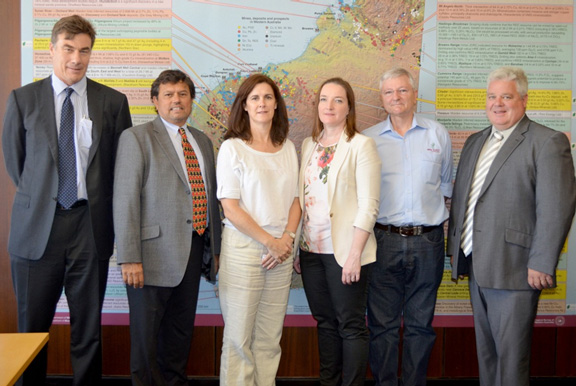
Members of the panel (left to right):
Phil Scott, John Gardner, Julie Hill, Charmian Barton, Michael Slight, and DMP Director General Richard Sellers.
These five individuals bring a wealth of experience and are well-suited to providing expert, independent advice to the Department of Mines and Petroleum.
The advisory panel meetings are held quarterly at the department’s office in East Perth.
Recommendations made by the panel to date include the recommendation to the Director General that four pilot rehabilitation sites be declared abandoned mines, thereby allowing the sites to be considered for costing and further consideration of rehabilitation under the MRF.
The rehabilitation agenda
For the first time in Western Australia, the State Government now has a perpetual fund that can be used for the rehabilitation of abandoned mine sites. There are many existing abandoned mine sites in Western Australia arising from more than 100 years of mining activity, and the MRF allows for interest generated by the fund to the used for historical abandoned mines.
Recently, Mines and Petroleum Minister Bill Marmion announced the first four sites to be gazetted as abandoned mines under the Mining Rehabilitation Fund Act 2012.
The four sites, Black Diamond in Collie, Elverdton near Ravensthorpe, the ProForce site near Coolgardie, and an abandoned tailings storage facility at Bulong, east of Kalgoorlie, were presented to the Mining Rehabilitation Fund Advisory Panel earlier this year for consideration and costing for future rehabilitation.
The Mining Rehabilitation Advisory Panel had since recommended all four sites for gazettal under the Mining Rehabilitation Fund Act.
The process of gazettal is the first step in being able to rehabilitate these abandoned mine sites using interest earned on the MRF in the future.
Under the legislation, interest generated on the fund can be used to rehabilitate legacy abandoned mine sites throughout the State.
Two of the sites that have been recommended for gazettal had bonds held against them that have been called in to use for rehabilitation work.
Future works on these pilot sites will provide detailed information that will contribute to the review of the MRF that’s currently scheduled for 2017, and the disturbance types and rates in the MRF regulations.
Members of the DMP corporate executive visited the legacy Black Diamond coal mine and its pit lake during a trip to Collie in October 2014.
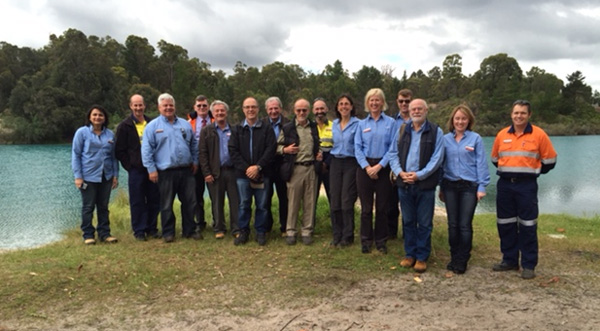
DMP’s Corporate Executive Team and Senior Collie Officers
DMP is working on a policy for abandoned mines which will incorporate expert input from the MRF Advisory Panel.
Abandoned mine policy
Now that the MRF provides a dedicated source of funding to address the issue of legacy sites, DMP is developing an abandoned mine policy that will provide a framework for the prioritisation of works on abandoned mines.
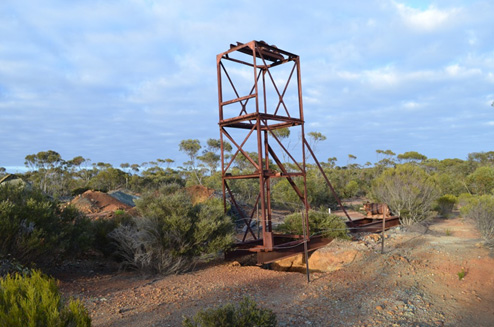 The abandoned mine policy will build on work already undertaken by the Geological Survey of Western Australia, who have developed an inventory of abandoned mine sites, and incorporate environmental and safety risk assessments into an extensive publicly available database.
The abandoned mine policy will build on work already undertaken by the Geological Survey of Western Australia, who have developed an inventory of abandoned mine sites, and incorporate environmental and safety risk assessments into an extensive publicly available database.
The work undertaken to date by Geological Survey of WA focused on abandoned mine features close to urban areas and roads as safety was highlighted as a priority. The MRF abandoned mine policy will allow the community to provide input about additional abandoned mines in their area.
The MRF abandoned mine policy will be available for community and industry consultation in January 2015 and DMP hopes to receive valuable input from industry and community members with expertise in abandoned mine and mine rehabilitation.
Dealing with dead tenements
The implementation of the MRF has enabled DMP to address in a systematic way the complex issue of unconditional performance bonds on dead tenements. The issue arises as a result of tenements expiring, being surrendered, or forfeited, and an unconditional performance bond continuing to be held by DMP.
This situation requires the tenement holder to provide evidence to DMP that all of the land disturbed as a result of the exploration and/or mining has been rehabilitated. For a variety of reasons, many of these bonds on dead tenements have not been resolved in a timely manner.
At the beginning of 2014, almost $11 million in unconditional performance bonds were being held for nearly 400 dead tenements in Western Australia. These values can change as more tenements die, through expiry, surrender or forfeiture.
However the department’s MRF team has been systematically investigating all of these tenements and liaising with former tenement holders to determine whether rehabilitation obligations were met and the unconditional performance bonds can be retired.
To date, bonds have been retired or are scheduled to be retired on 205 dead tenements. Another 118 tenements are awaiting a decision as tenement holders complete the rehabilitation and provide rehabilitation reports. Approximately another 50 will be reviewed following further investigation
More than $8 million in unconditional performance bonds associated with dead tenements is in the process of being retired to mining companies and individuals following the implementation of the Mining Rehabilitation Fund (MRF).
For those dead tenements where rehabilitation has not been completed, DMP will determine whether the unconditional performance bonds should be exercised (called-in).
One site that’s already had its bonds called-in is the abandoned tailings storage facility at Bulong, east of Kalgoorlie. The site is one of the four pilot sites in the process of being gazetted as abandoned mines under the MRF Act.
Once a rehabilitation strategy has been established for the site, the retired bonds will be used in the first instance to fund the rehabilitation prior to calling on interest that has been earned on the fund for any outstanding work once the retired bonds have been spent.
Prior to the Mining Rehabilitation Fund, DMP had no means of funding rehabilitation work on abandoned sites, and DMP had not undertaken substantive rehabilitation work on any abandoned mines in Western Australia for decades.
Electronic communication and one-on-one assistance
Prior to the commencement of the Mining Rehabilitation Fund, the MRF team contacted all tenement holders via a registration letter. Some 3,550 letters were sent advising holders that the MRF was on its way and requesting that they register through the DMP website.
This registration process included providing an email address that would be used for all future correspondence. Given the high level of adoption, all but a handful of tenement holders have now provided a report through the online system that included email contact information.
In future, tenement holders will be contacted electronically to remind them of the MRF reporting requirement and provide guidance and support.
The MRF team also undertook a number of regional visits to assist tenement holders to register and report disturbance data particularly with smaller operators, some of whom were not familiar with or experienced in corresponding electronically with DMP.
The feedback given to DMP was that these regional visits provided valuable support to tenement holders.
As a result, further regional visits are planned for April and May 2015 where DMP staff will once again be available to assist with registering and reporting disturbance data in the lead up to the MRF’s second year reporting deadline.
Learning from the last 12 months
The development and implementation of the MRF over the last four years has been built on a foundation of consultation and engagement with all stakeholders. DMP remains committed to this approach, and will shortly be contacting all tenement holders seeking their feedback on any ideas or suggestions that DMP could consider to improve the MRF administration and processes.
Of course DMP is keen to receive feedback at any time, however over the next four months the MRF team will be investigating and prioritising the next phase of system and process enhancements.
The team has already identified the following potential enhancements on which feedback from tenement holders will be sought:
- Addition of new land types. While there are 30 different land categories identified in the Mining Rehabilitation Fund lodgement system, DMP has received feedback that there are a small number of mining-related land forms that do not easily sit within those existing classifications. Feedback from some tenement holders has specifically asked that new categories are created for:
- sea walls and engineered structured in the marine environment
- adits, entrances and declines to underground mining operations
- salt mining areas, and/or
- sand mining in replenished rivers.
- Combining Form 5 reporting obligations into the MRF online system. Also following feedback from tenement holders, DMP is proposing to combine the processes for submitting Form 5 submissions with MRF reports so that a single report can be submitted to DMP.
- Producing an online MRF calculator. Another suggestion has been that to increase transparency and assist industry estimate levy costs, a new online MRF calculator be developed and available on the DMP website. The idea is that the calculator would be a simple tool allowing anyone wanting to buy a tenement with pre-existing environmental disturbance, or tenement holders planning rehabilitation work, to estimate their future levy payment.
- Allow automatic transfer of data between PoW and MRF report. The majority of Programmes of Work require the submission of a rehabilitation report at the completion of the exploration activity. The MRF team have been asked to investigate whether this could be linked to the MRF reporting system in a similar way to the Annual Environmental Report data that is able to be automatically copied across.
- Removal of requirement to confirm intention to renew. The 2014 MRF period provides the opportunity for DMP to retire bonds when holders make the first levy payment. To ensure the state is not exposed to unacceptable risk, a number of compliance checks were conducted before bonds were retired. This included requests for holders to indicate the holders intention if tenements due for renewal in the next 12 months. It is proposed that in future years holders will receive notification that payment has been received and a reminder that all environmental rehabilitation conditions must be met (rather than having to make a separate submission to that effect).
The decision on implementation of any enhancements will be based upon a cost-benefit analysis, and timing will depend upon the complexity of any changes.
It is therefore planned that the MRF Team will send correspondence to all tenement holders before the end of the year seeking their views on the above suggestions, and also asking whether there are any other suggestions for enhancements that DMP should be considering.
Any feedback can be sent to mrfenquiry@dmp.wa.gov.au